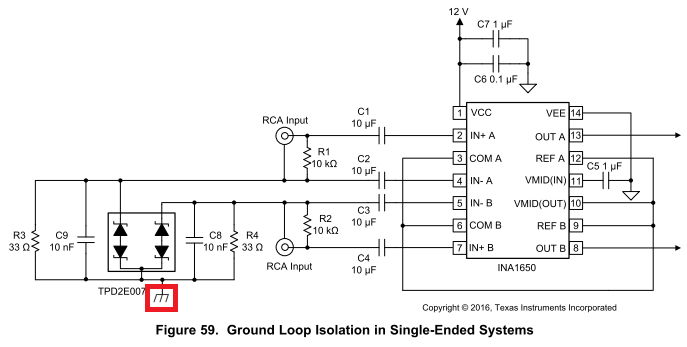Other Parts Discussed in Thread: TPD2E007, INA1651EVM,
Hi,
The ground which the coaxial cable is connected is shown by a red frame as below, I would like to confirm just in case, so should this ground be floating to isolate VEE if 0V is supplied to VEE ?
In addition, the following R3, R4, C8, C9 and TPD2E007 aren't mounted on INA1650EVM and INA1651EVM, so could you please tell me that reason ?
Best regards,
Kato


